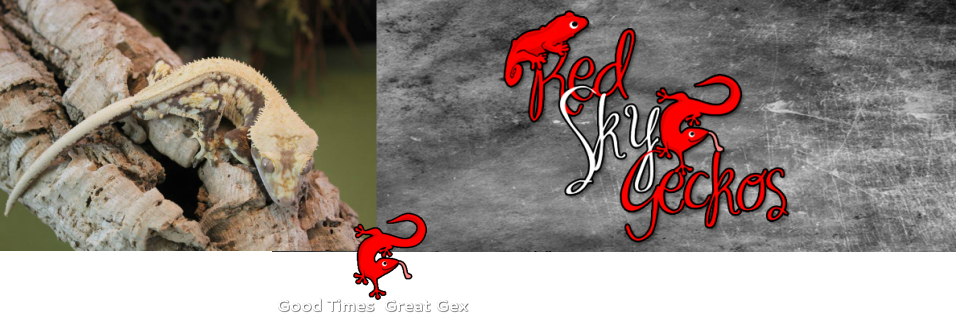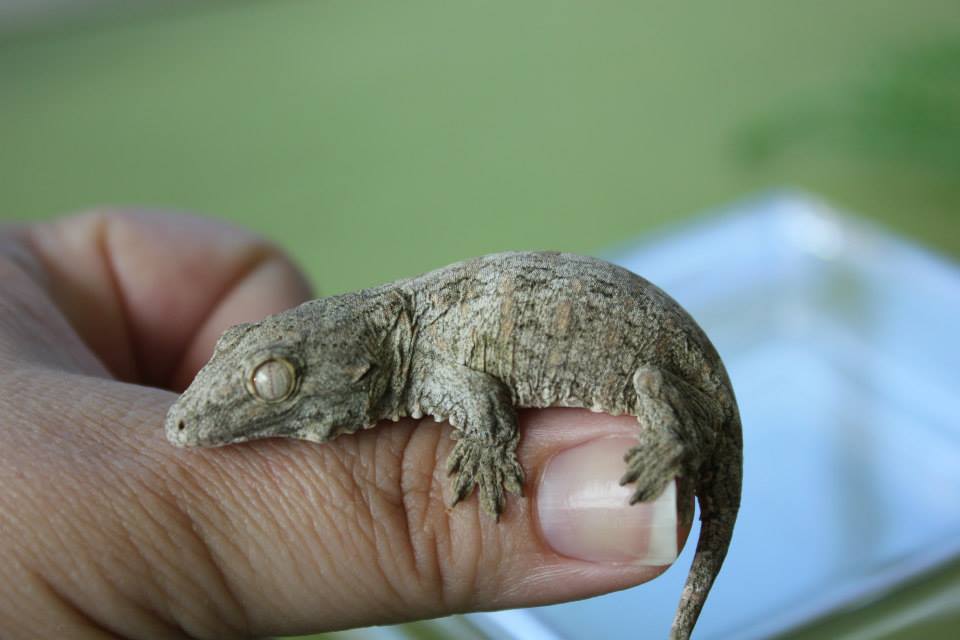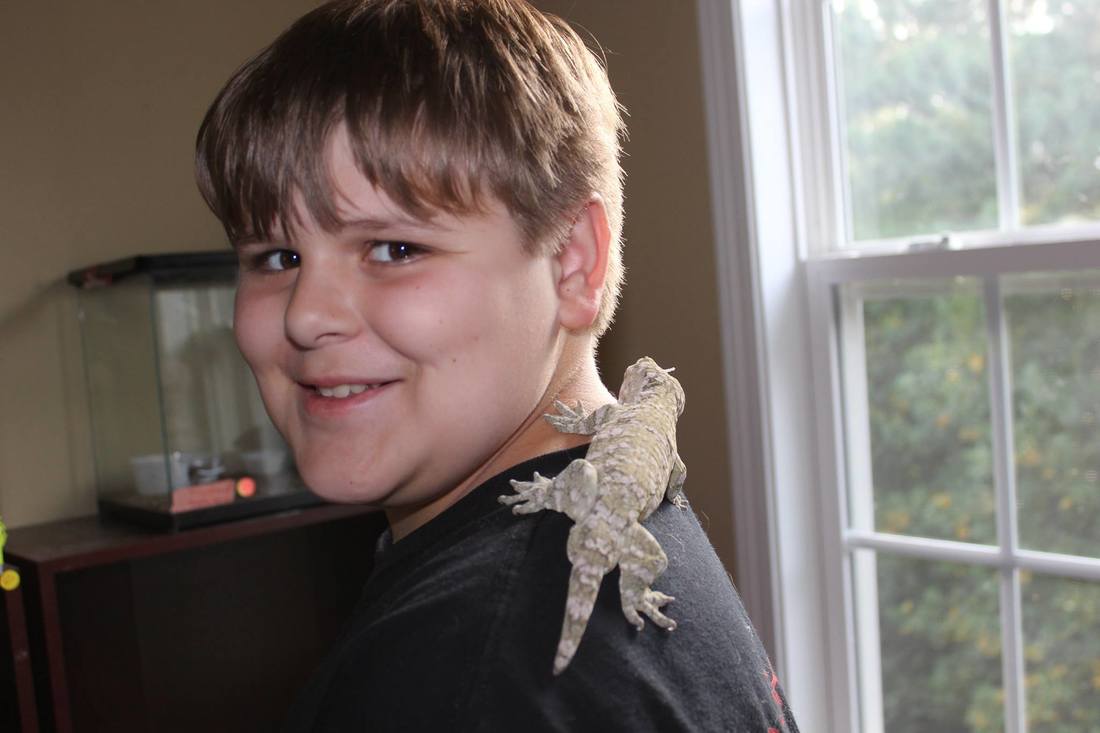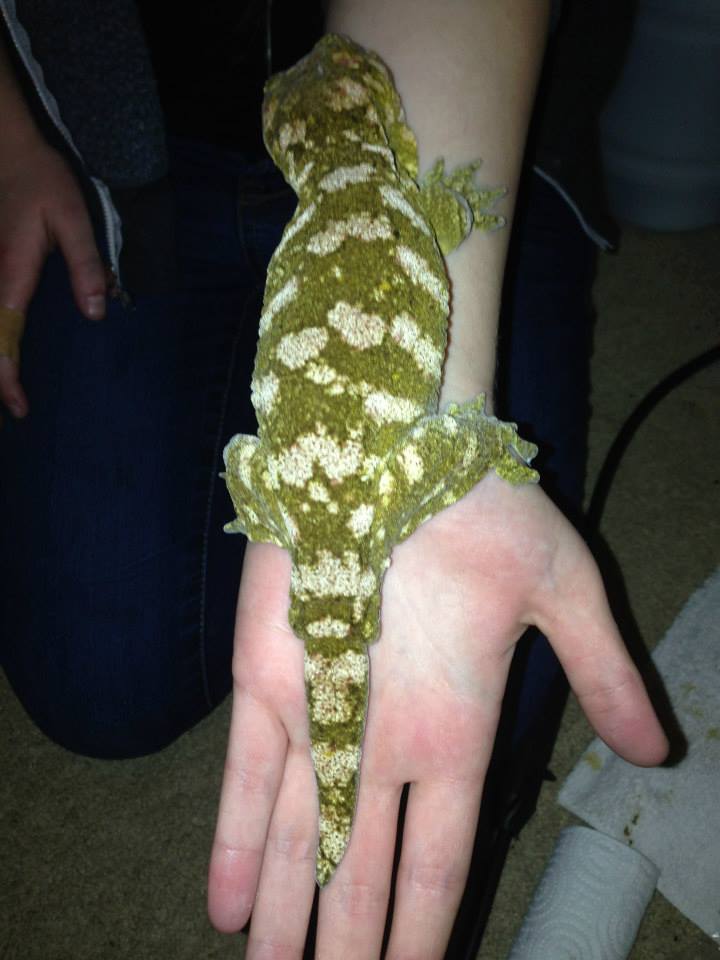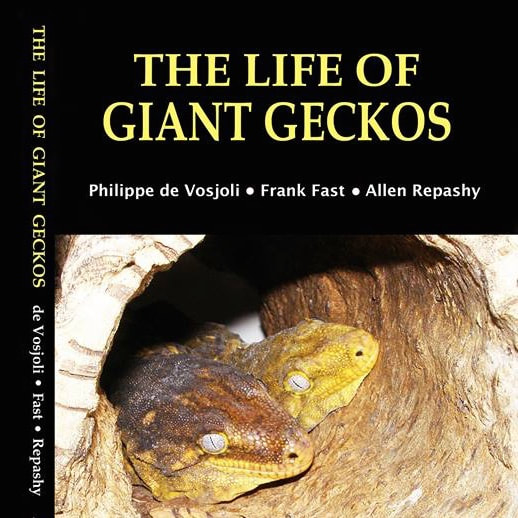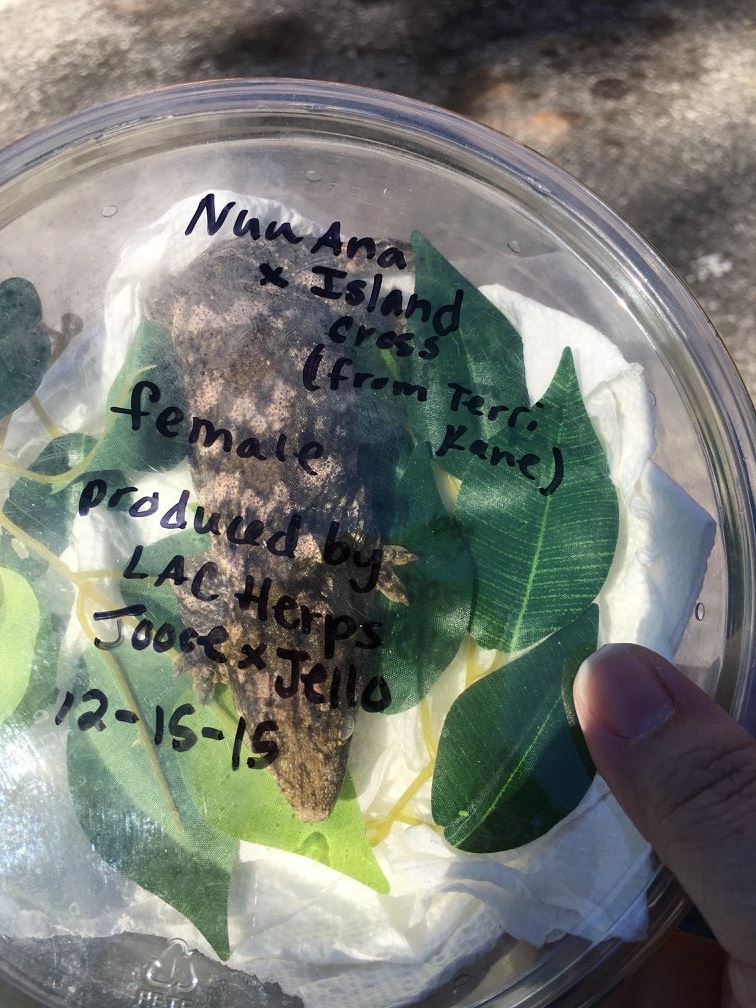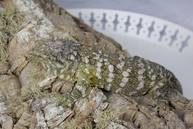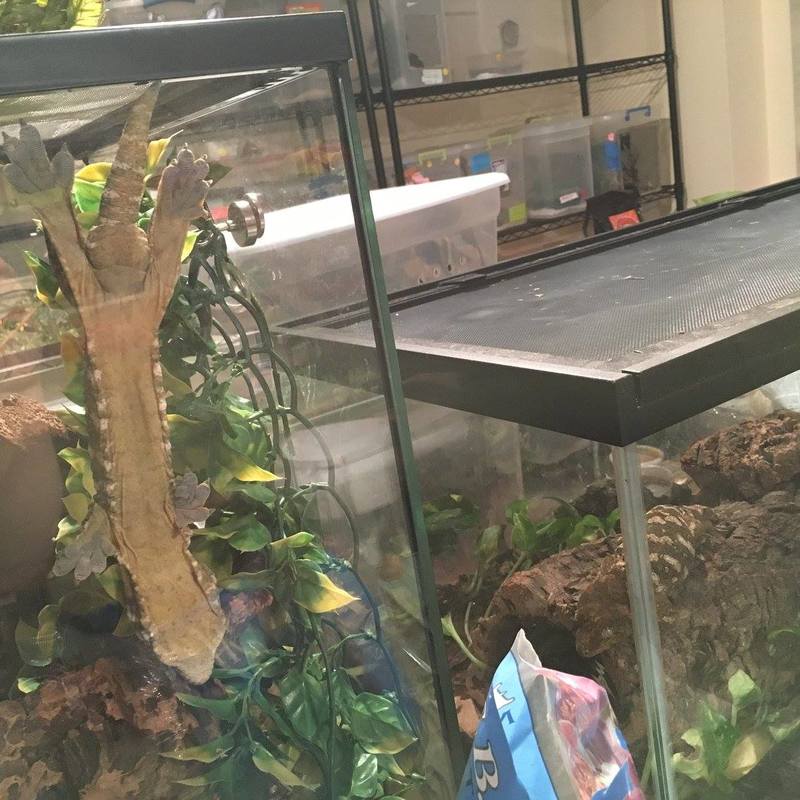Jeff Corwin handling a Leachie while visiting New Caledonia
|
Rhacodactylus Leachianus or Leachies, are the largest of the gecko species. They have a lifespan of about 30 years. They reach sexual maturity between 3-7 years. They might continue to grow at a slower rate throughout their lives. They are primarily nocturnal but are known to come out and bask as well. They are found on the main island of New Caledonia-Grand Terre, as well as the smaller islands. They live primarily in cork hollows and create nest areas there. Their primary diet in the wild is a fruit related to a Russian Olive and the fruit of Ficus trees, similar to figs and various insects. The GT or mainland locales are more carnivorous and have been found eating lizards, small mammals and even small birds. Their colors and size tends to be different based on locale, but the locales we work with are primarily green based with either white or pink banding and/or spots. Although Leachianus can get as large as 8-13 inches SNV length and 400+ grams, we have decided to breed smaller offshore island locales such as Nuu Ana, Nuu Ami, and Moro. Nuu Ana and Nuu Ami are very small islands and the Leachianus adapted by maxing out at 6 inches SNV and 120-200 grams. Moro/Isle E tends to be a bit bigger at 8 inches SNVL and up to 250 grams. They are handleable but generally not as tolerant as Crested Geckos and Chahoua. They can be cage aggressive and territorial. They are vocal and can bark, hiss and growl. Locally they are known as the "Devil in the Trees". One of their favorite tricks is to shoot excrement at would-be handlers.
This book is out of print and not widely available, but Northern Gecko still had copies when this link was posted. https://www.northerngecko.net/the-life-of-giant-geckos/
|
LocalesGrand Terre or GT
Poindimie Mount Koghis Yate Mount Humboldt Riviere Bleue Smaller islands Pine Island Bayonnaise Borosse Moro Nuu Ana Nuu Ami *Duu Ana Koe *Caanawa Currently we work with Nuu Ana, Nuu Ami, Moro/Isle E, Pine Island and Mixed Island *Important to note from a conservation standpoint that the Leachianus on these islands are thought to be extinct now due to the introduction of a type of fire ant. Rats are also a concern and are reducing the population of geckos throughout the islands. |
FoodLeachianus are predators of the smaller gecko species on the island. They eat ripe fruits and insects as well as small mammals and lizards. One locale, the Duu Ana, from a smaller island, is even thought to eat crab due to the lack of other food sources. In captivity R. Leachianus can eat packaged Crested Gecko Diet such as Pangea or Repashy with some modifications for extra protein and fresh fruit. Popular Fruits (should be very ripe) *Banana-use some calcium if feeding by itself *Mango *Papaya *Fig Strawberry Blueberry Apricot Insects (gut-loaded and dusted with a calcium/vitamin powder) Crickets Dubia Roaches Wax Worms (We don't use meal worms or super worms here, but have heard from other breeders that they are accepted by Leachies. The same is true of pinky mice as an occasional nutrition boost.) |
HousingLeachies are best kept by themselves in a larger enclosure than required for the other species. Since they are arboreal they require vertical space to climb and hide. 18x18x24 is a standard size for one adult Leachie of the smaller island locales. If you are working with the larger locales you might want to scale your caging up accordingly. They prefer logs and cork rounds to leaves and greenery as they typically live in tree hollows.You can create a bioactive tank by using isopods and springtails in a moist soil mix with leaf litter. We have found that they enjoy a large water dish to soak in, but be aware that they will defecate in the dish at least 2-3x per week and it will need to be cleaned and changed regularly. Natural plants can be used but they should only be non-toxic and very sturdy. Sword plants are one option. Plastic plants are a practical option and can cleaned and sterilized as needed. Leachies seem to appreciate a basking spot and a daylight tropical/rain forest bulb can be used on one side of the enclosure. If you are using glass you might want to cover one or two sides to make the leachie feel more secure. Plastic or PVC is a workable alternative. Temps should be kept in the 70's but some seasonal variation lower and higher inside your home is fine. Humidity should stay above 50% and below 80%. Keeping one side drier than the other will allow the gecko to choose it's environment. If using a light it is easier to use it over the drier side.
Baby Leachianus actually prefer a smaller space and feel more secure in it. Since they can go on hunger strikes, making them feel secure is a must. Start out with a 6qt-15qt plastic tub with a secure lid like a Sterlite. Add air holes and some screening for ventilation. Use a natural substrate and a couple good size pieces of cork for hiding. |
